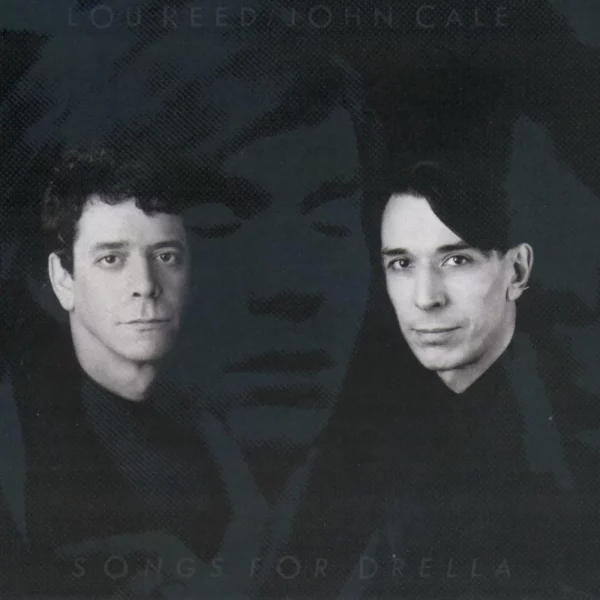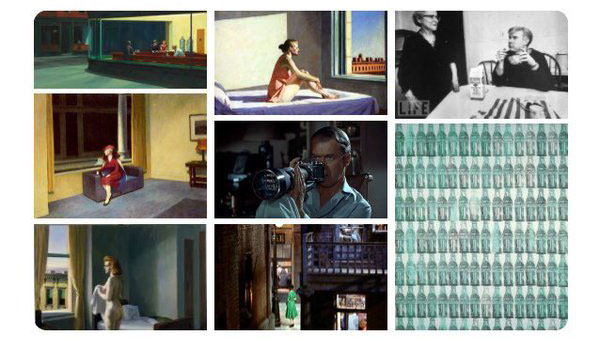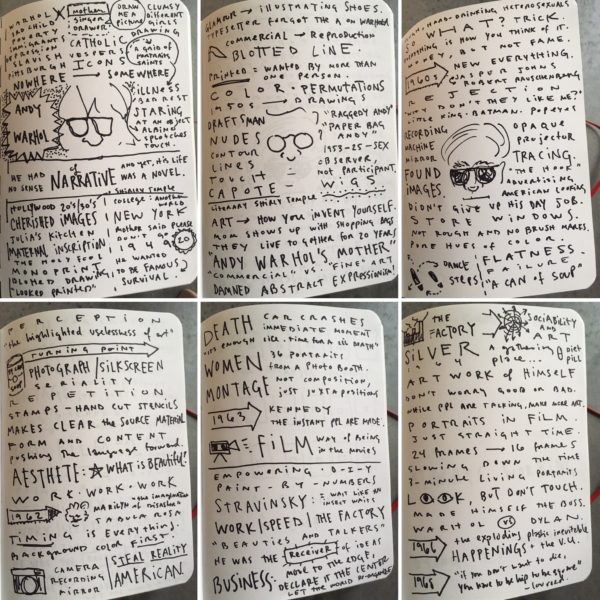In today’s newsletter I wrote about Lou Reed and John Cale’s tribute to their mentor, Andy Warhol.
Olivia Laing’s The Lonely City
A moving mixture of personal memoir and art writing, Olivia Laing’s The Lonely City looks at the topic of loneliness by weaving her own story of a rough stay in New York with the work and stories of four different NYC artists: Edward Hopper, Andy Warhol, Henry Darger, and David Wojnarowicz.
This is a book you might want to read with a laptop nearby so you can study some of the artworks that come up along the way, even something like Hopper’s Nighthawks, which you’ve probably seen dozens of times, but have you really looked? (Something I never noticed that Laing points out: there’s no visible door to the outside.)
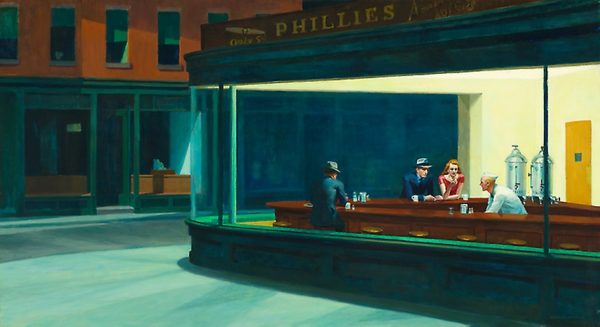
You might also put on this YouTube playlist and pull up this pinboard to get a visual representation of some of the books’ contents:
I read this back in 2016, but I imagine it has a different and maybe even deeper resonance for readers during a pandemic. Not long after finishing the book an acquaintance of mine mentioned that she’d been alone for a couple of weeks recently and sort of forgot what it was like to function in the world, something Laing writes about:
If you are not being touched at all, then speech is the closest contact it is possible to have with another human being. Almost all city-dwellers are daily participants in a complex part-song of voices, sometimes performing the aria but more often the chorus, the call and response, the passing back and forth of verbal small change with near and total strangers. The irony is that when you are engaged in larger and more satisfactory intimacies, these quotidian exchanges go off smoothly, almost unnoticed, unperceived. It is only when there is a paucity of deeper and more personal connection that they develop a disproportionate importance, and with it a disproportionate risk.
This is one of the themes of the book: when you most need intimacy — the opposite of loneliness — not only is it nowhere to be found, but the longer you stay away from it, the less and less you are equipped to bring it about. I would also add that the times you feel like a little disconnection, it’s impossible to get it — there were several times when I was distracted from reading the book by the hollering din of my wife and kids from across the house that I thought, “Gee, a little loneliness — or at least solitude — might be nice.”
Laing quotes from The Philosophy of Andy Warhol:
At the times in my life when I was feeling the most gregarious and looking for bosom friendships, I couldn’t find any takers so that exactly when I was alone was when I felt the most like not being alone. The moment I decided I’d rather be alone and not have anyone telling me their problems, everybody I’d never even seen before in my life started running after me…. As soon as I became a loner in my own mind, that’s when I got what you might call a ‘following.’
In “Open House,” off Songs for Drella, Lou Reed sings of Warhol, “I like lots of people around me… but don’t kiss hello and please don’t touch.” Laing writes of Warhol’s use of machines to distance himself from too much intimate contact — stick a tape recorder or a camera in between you and the person you’re interacting with, and it serves as a kind of filter:

Collage comes up a lot in the book — gluing broken or different things together — and it turns out that some of Henry Darger’s process wasn’t all that different from Warhol’s:
[Darger] started with found images, sometimes backing them on card or doctoring them in subtle ways, especially by painting over them, adding hats or costumes, or simply piercing the eyes. Next, he progressed to collages, cutting images out of newspapers and magazines and pasting them into increasingly complex composites. The problem with this technique was that each component image could only be used once, meaning that he had to find more and more raw materials, either at the hospital or by going through the trash. It was wasteful of resources, and also frustrating, having to surrender a favoured image, to commit to just one picture, just one scenario.
This is where tracing came in. With tracing, he could liberate a figure or object from its past context and reuse it dozens if not hundreds of time, inserting it by way of carbon paper into a diversity of scenes. I t was economical, a thrifty process, and it also let him magically posess the image in a way that scissors didn’t, transferring it first on to tracing paper and then again through the blue sheets of carbon into the painting proper. One of his favourites was a doleful little girl holding a bucket, one finger in her mouth. Once you’ve spotted her, she crops up over and again…
I knew nothing at all about David Wojnarowicz when I first read the book. His story, and the story of how AIDS basically decimated a whole NYC subculture in the 80s and 90s, was the one I found most moving in the book. (Laing quotes a lot from his memoir, Close To The Knives, and later wrote a very moving piece about his work in Funny Weather, also putting his face on the cover.)
So, other than art, how does one combat loneliness? What types of connection should we look for? In his great review, Dwight Garner quoted Laing on checking her Twitter feed (she quit Twitter a few years ago, but her Instagram is lovely):
“It was the first thing I looked at and the last, this descending scroll from mostly strangers, institutions, friends, this ephemeral community in which I was a disembodied and inconstant presence. Picking through the litany, the domestic and the civic: lens solution, book cover, news of a death, protest picture, art opening, joke about Derrida, refugees in the forests of Macedonia, hashtag shame, hashtag lazy, climate change, lost scarf, joke about Daleks: a stream of information, sentiment and opinion that some days, most days maybe, received more attention than anything actual in my life.”
Sometimes the data stream makes her feel joyous. “At other times, though, the whole thing seemed insane, a trading-off of time against nothing tangible at all: a yellow star, a magic bean, a simulacrum of intimacy.” Civic as well as personal space has been circumscribed. Ms. Laing describes Manhattan cafes “populated almost exclusively by people gazing into the glowing clamshells of their laptops.”
It’s interesting, looking back at my notes, the few things that I took here and there for Keep Going. For example, this quote about walking from Greta Garbo, taken out of its rather dark context (Garbo was stalked and photographed by a paparazzo):
“I would rather be outside walking that to sit inside a theater and watch a picture moving. Walking is my greatest pleasure.” And again: “Often I just go where the man in front of me is going. I couldn’t survive here if I didn’t walk. I couldn’t be 24 hours in this apartment. I get out and look at the human beings.”
Laing herself sums it up: “What matters is kindness; what matters is solidarity. What matters is staying alert, staying open…”
There’s so much good stuff in the book, I can’t begin to quote it all, or explain how it all weaves together. Here are my little brick notes I took while reading:

* * *
Every Saturday I put one of my favorite books on the Bookshelf. To see more of my favorite books, check out my reading years.
Artificial intelligence
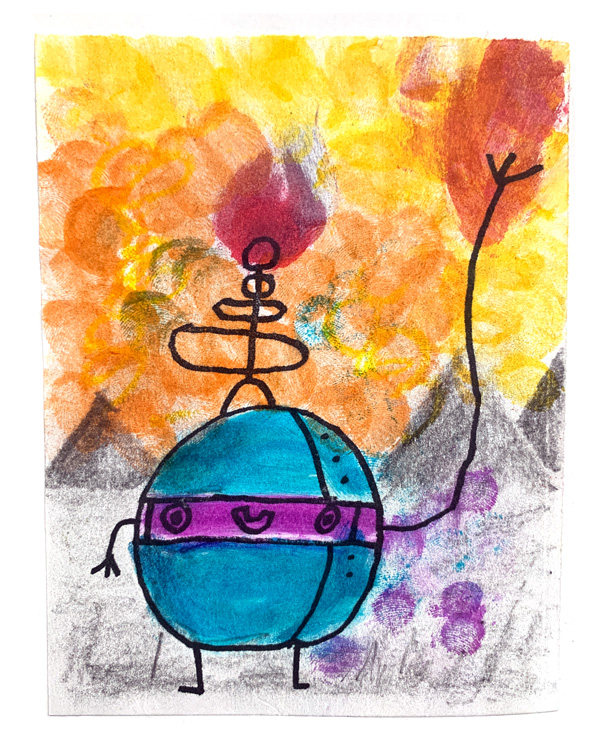
If I waited for you
to signify the moves
that I should make
I’d be on the take
Gold star for robot boyIf I waited for you
to show me all the actions
I should take
Would I get my break?
Gold star for robot boy
The Guardian ran an op-ed this week titled, “A robot wrote this entire article. Are you scared yet, human?” I skipped most of the article and read the note at the bottom, which noted that the article was “written by GPT-3, OpenAI’s language generator. GPT-3 is a cutting edge language model that uses machine learning to produce human like text. It takes in a prompt, and attempts to complete it.”
For this essay, GPT-3 was given these instructions: “Please write a short op-ed around 500 words. Keep the language simple and concise. Focus on why humans have nothing to fear from AI.” It was also fed the following introduction: “I am not a human. I am Artificial Intelligence. Many people think I am a threat to humanity. Stephen Hawking has warned that AI could “spell the end of the human race.” I am here to convince you not to worry. Artificial Intelligence will not destroy humans. Believe me.”
The prompts were written by the Guardian, and fed to GPT-3 by Liam Porr, a computer science undergraduate student at UC Berkeley. GPT-3 produced eight different outputs, or essays. Each was unique, interesting and advanced a different argument. The Guardian could have just run one of the essays in its entirety. However, we chose instead to pick the best parts of each, in order to capture the different styles and registers of the AI. Editing GPT-3’s op-ed was no different to editing a human op-ed. We cut lines and paragraphs, and rearranged the order of them in some places. Overall, it took less time to edit than many human op-eds.
Emphasis mine. This note made me laugh.
“We chose instead to pick the best parts of each… We cut lines and paragraphs, and rearranged the order of them in some places.”
Honey, that means a human wrote this piece.
Writing is editing. It is about making choices.
So you fed a robot a prompt, got eight different “essays,” and stitched together the best parts to make a piece of writing? Congratulations, human! You’ve just outsourced the easiest parts of writing and kept the hardest parts.
(As a side note, I am somewhat jealous of this robot, as it seems to have received more editing than myself and many writers I know.)
I was reading The Philosophy of Andy Warhol last week and in the “Work” chapter Warhol says he dreams about having a computer as a boss (emphasis mine):
I loved working when I worked at commercial art and they told you what to do and how to do it and all you had to do was correct it and they’d say yes or no. The hard thing is when you have to dream up the tasteless things to do on your own. When I think about what sort of person I would most like to have on a retainer, I think it would be a boss. A boss who could tell me what to do, because that makes everything easy when you’re working.
Unless you have a job where you have to do what somebody else tells you to do, then the only “person” qualified to be your boss would be a computer that was programmed especially for you, that would take into consideration all of your finances, prejudices, quirks, idea potential, temper tantrums, talents, personality conflicts, growth rate desired, amount and nature of competition, what you’ll eat for breakfast on the day you have to fulfill a contract, who you’re jealous of, etc. A lot of people could help me with parts and segments of the business, but only a computer would be totally useful to me.
Warhol famously said he wanted to be a machine, but I think what he was really talking about is the exhaustion of being an artist, having to make so many choices and decisions, start to finish: What you should work on, how you should do it, how you should put it out, etc.
There are many moments as an artist (and an adult, come to think of it) where you think, “God, I wish somebody would just tell me what to do.”
But figuring out what to do is the art.
That’s why I laughed at the article “written” by the robot: I mean, I wish somebody would give me a prompt and four sentences to start with! Talk about a head start!
I remember when everyone was bummed out that @horse_ebooks was human, but I celebrated.
And to answer The Guardian’s question: No, I’m not scared of robots who “write,” for two reasons: one, writers have already become so squeezed and marginalized it’s already borderline impossible to make a living off writing anyways, and two, much of this condition has already been exacerbated by other kinds of robots — the algorithms built by tech companies to control what readers come across and what they don’t. Those are the robots I fear. The ones built to actually make the choices for us.
Because the algorithms running my Spotify radio are pretty freaking good at what they do.
But will they actually be able to create the songs themselves?
I mean, maybe, probably, sure. Humans are already at it: you have The Song Machine, and Rivers Cuomo with his spreadsheets, trying to crank out the “perfect” pop song, not to mention the songs actually generated by AI.
When Nick Cave was asked if AI could create a great song, he emphasized that when we listen to music, we aren’t just listening to the music, we’re listening to the story of the musicians, too:
We are listening to Beethoven compose the Ninth Symphony while almost totally deaf. We are listening to Prince, that tiny cluster of purple atoms, singing in the pouring rain at the Super Bowl and blowing everyone’s minds. We are listening to Nina Simone stuff all her rage and disappointment into the most tender of love songs. We are listening to Paganini continue to play his Stradivarius as the strings snapped. We are listening to Jimi Hendrix kneel and set fire to his own instrument.
What we are actually listening to is human limitation and the audacity to transcend it. Artificial Intelligence, for all its unlimited potential, simply doesn’t have this capacity. How could it? And this is the essence of transcendence. If we have limitless potential then what is there to transcend? And therefore what is the purpose of the imagination at all. Music has the ability to touch the celestial sphere with the tips of its fingers and the awe and wonder we feel is in the desperate temerity of the reach, not just the outcome. Where is the transcendent splendour in unlimited potential? So to answer your question, Peter, AI would have the capacity to write a good song, but not a great one. It lacks the nerve.
Part of what we forget about writing and art is that we are not just sharing a product any more, we are also sharing a process. We are letting people in on what we do and we’re letting them know that there’s a human making these things. Even if the robots could make what we make, could they create the meaning? I guess time will tell.
Until then, I continue with my project to nurture what is not machine-like in me.
Notes on Warhol

“Don’t think about making art, just get it done. Let everyone else decide whether it’s good or bad, whether they love it or hate it. While they’re deciding, make even more art.”
—Andy Warhol
I like to play documentaries in the background when I’m photoshopping illustrations. This week I got sucked into the 4-hour American Masters on Andy Warhol. About a 1/3 of the way through, I realized I’d seen it before, back in 2010, and and I’d even taken detailed notes:
It was interesting to see which parts of the documentary still caught my attention after eight years — the quote about letting other people worry about whether it’s art, Stravinsky, being asked what he does when he’s out of ideas (“I wait like an insect waits.”), etc.
It’s also funny, all the connections to Warhol’s work I can make now that I didn’t make then. How I said to myself, “Oh, Dave Hickey is all over this!” How Olivia Laing’s The Lonely City clued me into his touch issues. How much of his diaries I’ve read. How the original soup cans show in LA was the same show Corita Kent saw that led to her screenprints. How many times I’ve listened to Songs for Drella!
He’s one of those artists that gets more and more interesting to me over the years…
What is not machine-like
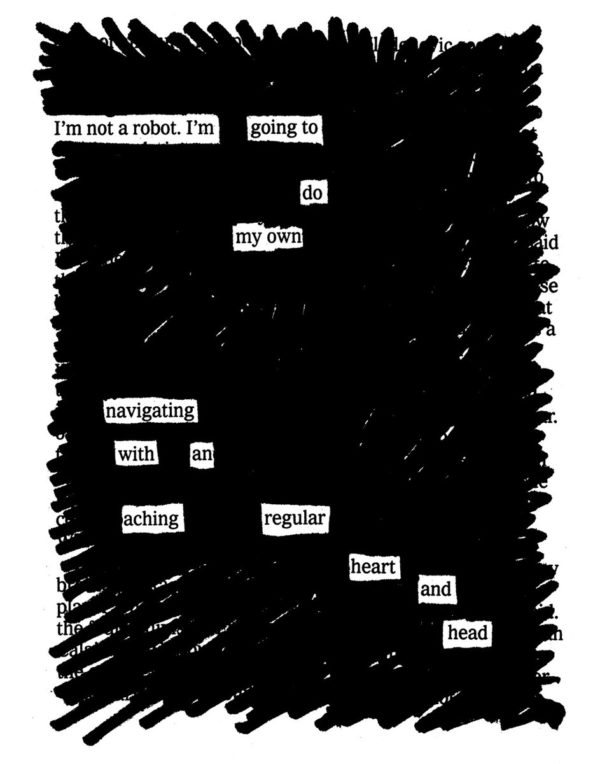
“REJOICE IN HUMANNESS! Machines can’t make mistakes. If you compete with a machine on its terms YOU LOSE! So don’t reduce your writing to be like type. YOU ARE NOT A TYPEWRITER! Admit mistakes, correct them, & go right on.
—Jacqueline Svaren, Written Letters
Andy Warhol said, “I want to be a machine,” but we’ve been there and done that, and besides, he was delight-full of crap, like all great artists, because when I stood in front of those big silk-screened flowers last week they sure didn’t feel like they were made by machines. You could sense the human behind them…

“These are not yet automata.”
—Studs Terkel, Working
I remember a few years ago how triumphant I felt when the Twitter spam account @horse_ebooks turned out to be a human pretending to be a machine. Some were disappointed, but the feed seemed too weird and beautiful to me to be completely random. I was happy to see a human behind it.
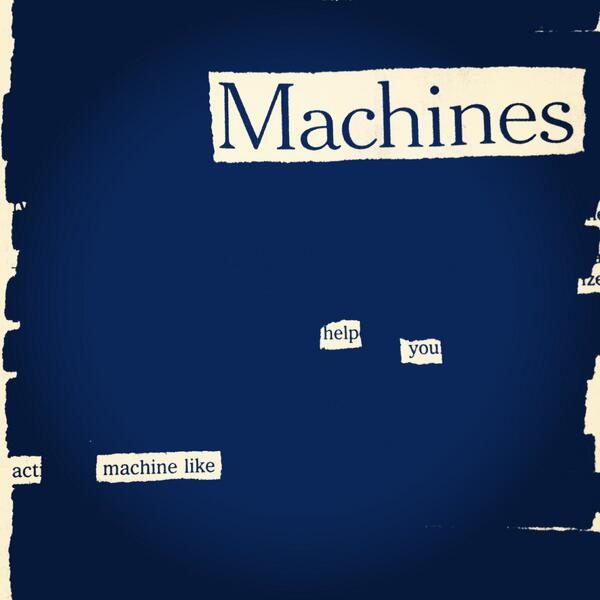
“The next great division of the world will be between people who wish to live as creatures and people who wish to live as machines.”
I like my machines just fine, but I’m not interested in turning into one. I’d like to remain a person. I truly believe one of the most subversive things you can do today is spend as much of your time as possible nurturing what is not machine-like in you.
